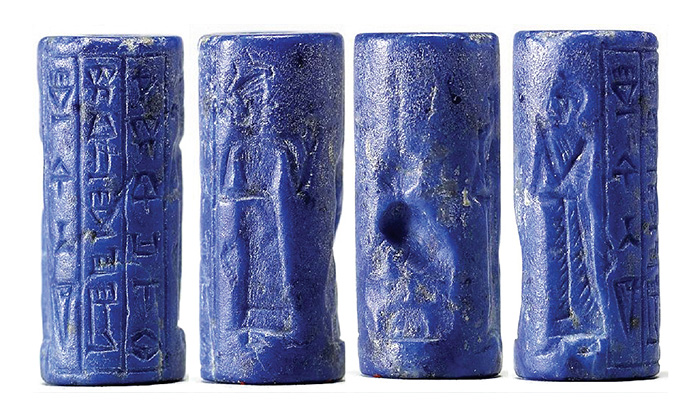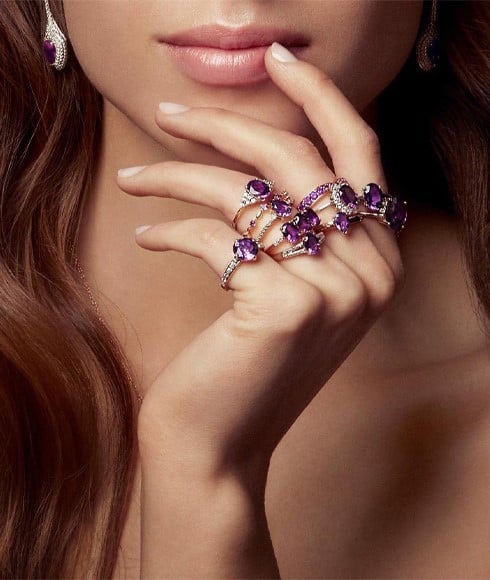The vivid, exquisite blue gemstone Lapis Lazuli has been highly treasured for thousands of years. Jewelry made using Lapis Lazuli has been found in prehistoric tombs in Africa, Asia and Europe – its symbolism dates back many millennia.
Due to its striking shade of blue it has been associated with godliness and supernatural forces for thousands of years. In ancient Rome, it was believed that Lapis Lazuli was a powerful aphrodisiac as well as symbolizing love, peace and joy. It was ground into a powder and mixed with liquid and used as a compress to neutralize negative emotions and draw out spiritual impurities.

Pharaohs and judges in ancient Egypt wore emblems of Maat (the goddess of truth) made from Lapis Lazuli. They believed the stone bore religious significance and displayed the high status of their leaders.

The death mask of Tutankhamun was made out of high-carat gold with inlays of colored glass, and gemstones including Lapis Lazuli which was used to create the eye surrounds, eyebrows and details on the beard. One famous legend stated that King Solomon was given a ring made of Lapis Lazuli by an angel. The ring gave him the power to control a group of demons to build his temple. It has even been used in exorcisms. Lapis Lazuli was ground down with gold and put on the head of the possessed person. As the poultice dried out, it would supposedly draw out the demon.
Cylinders of the stone were carved and then rolled on wet clay to leave impressions of images and text.
Lapis Lazuli has not only been mentioned in old legend and lore, it was also used to inscribe documents. The gem is relatively soft and therefore fairly easy to engrave. Cylinders of the stone were carved and then rolled onto wet clay to leave impressions of images and text. This particular cylinder (below) depicts a goddess and worshipper with cuneiform script, one of the earliest forms of writing which was invented by the Sumerians.
 Image courtesy of Walters Art Museum
Image courtesy of Walters Art Museum
Lapis Lazuli means 'blue stone' and was ground down and used as a cosmetic by Ancient Egyptians. It was also used by artists during the Renaissance period to create beautifully blue skies and ocean scenes. It was most famously used by Michelangelo to create the blue colors in his frescoes for the Sistine Chapel.
Today, people associate the gem with healing, love, peace and wisdom while others claim it nurtures and promotes psychic ability.
DISCOVER LAPIS LAZULI
MORE GEMSTONE LORE
Iolite
Moonstone
Emerald
Labradorite
Jade
Turquoise
Amethyst
Opal
Aquamarine
Rose Quartz

